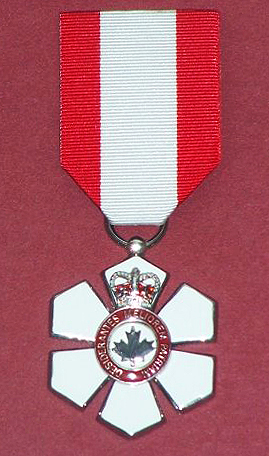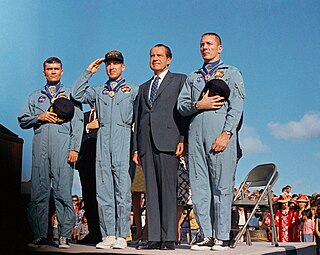In the United Kingdom and the British Overseas Territories, personal bravery, achievement, or service are rewarded with honours. The honours system consists of three types of award:

The Order of Canada is a Canadian national order and the second-highest honour for merit in the system of orders, decorations, and medals of Canada, after the Order of Merit.
Orders of Commonwealth countries.

The Order of Merit is an order of merit for the Commonwealth realms, recognising distinguished service in the armed forces, science, art, literature, or the promotion of culture. Established in 1902 by Edward VII, admission into the order remains the personal gift of its Sovereign—currently Edward VII's great-great-grandson Charles III—and is restricted to a maximum of 24 living recipients from the Commonwealth realms, plus honorary members. While all members are awarded the right to use the post-nominal letters OM and wear the badge of the order, the Order of Merit's precedence among other honours differs between countries.

Albrecht, Duke and Crown Prince of Württemberg was the last heir presumptive to the Kingdom of Württemberg, a German military commander of World War I, and the head of the House of Württemberg from 1921 to his death.
An order is a visible honour awarded by a sovereign state, monarch, dynastic house or organisation to a person, typically in recognition of individual merit, that often comes with distinctive insignia such as collars, medals, badges, and sashes worn by recipients.

Augusta Viktoria of Schleswig-Holstein was the last German Empress and Queen of Prussia by marriage to Wilhelm II, German Emperor.
The orders, decorations, and medals of Canada comprise a complex system by which Canadians are honoured by the country's sovereign for actions or deeds that benefit their community or the country at large. Modelled on its British predecessor, the structure originated in the 1930s, but began to come to full fruition at the time of Canada's centennial in 1967, with the establishment of the Order of Canada, and has since grown in both size and scope to include dynastic and national orders, state, civil, and military decorations; and various campaign medals. The monarch in right of each Canadian province also issues distinct orders and medals to honour residents for work performed in just their province. The provincial honours, as with some of their national counterparts, grant the use of post-nominal letters and or supporters and other devices to be used on personal coats of arms.

A necklet is a type of decoration which is designed to be worn and displayed around a person's neck, rather than hung (draped) from the chest as is the standard practice for displaying most decorations.
This is a list of orders, decorations and medals of the Republic of China, usually known as Taiwan after 1949. This list is sorted in order of precedence of the highest grade of each award on a full military dress. The Honour Sabre is a special case and is listed separately under Military orders, as per its official classification by the Ministry of National Defense.

William, Prince of Hohenzollern was the eldest son of Leopold, Prince of Hohenzollern and Infanta Antónia of Portugal.
Orders, decorations, and medals of the German Empire covers those decorations awarded by the states which came together under Prussian leadership to form the German Empire in 1871. For convenience's sake, this category also covers the decorations of the various German states which were no longer in existence in 1871, mainly because they had been annexed by Prussia during the Wars of Unification or before.

The Order of St. Sava is an ecclesiastic decoration conferred by the Serbian Orthodox Church and a dynastic order presented by the house of Karađorđević. It was previously a state order awarded by both the Kingdom of Serbia and the Kingdom of Serbs, Croats and Slovenes/Kingdom of Yugoslavia.

The orders, decorations and medals of Finland form a system through which the Finnish government shows its respect to persons who have distinguished themselves on some walk of life. The legal basis of the system is the Act on the displays of public recognition (1215/1999) which grants the president the authority to issue decrees on orders, medals and titles.

The Order of Military Merit is a military honour for merit that is, within the Canadian system of honours, the second highest order administered by the Governor in Council on behalf of the Canadian monarch.
The British Armed Forces recognises service and personal accomplishments of individuals while a member of the Royal Navy, British Army or Royal Air Force with the awarding of various awards and decorations.
The award system of the Democratic People's Republic of Korea was initially created less than one month after the foundation of the Republic. During the years of Japanese occupation of Korea, many of the future leaders fled to the Soviet Union. During World War II many if not close to all party leaders and Korean People's Army commanders served in the Soviet Army and as such adopted many of the Soviet awards criteria for their own. During the late 1940s and until the Sino-Soviet Split in late 1958, orders and titles were made in the Soviet Money Mints in Moscow or Leningrad. Soviet made awards were modeled after Soviet orders and made of sterling silver. Initially the orders were attached to clothing with a screw-plate, but after Soviet production stopped, production was moved to North Korea. The screwback was replaced with a pin and the silver content was replaced with cheap tin. With the exception of a few examples of modern orders, Soviet and Czech KPA awards are the most sought after in current militaria markets.

The Principality of Liechtenstein is the last independent principality of the Holy Roman Empire. After the fall of the empire, Liechtenstein aligned itself with Austria-Hungary until the end of World War I. Since that time, Liechtenstein has been most closely aligned with its neutral neighbor Switzerland. The honours system of Liechtenstein is made up of an order of merit, established in 1937, and a limited number of commemorative medals that were awarded during the 20th century.
With the inception of Company rule in India by the East India Company in 1757, the tradition of giving medals also began. Campaign medals and awards were given to soldiers who fought in the Company's presidency armies. After 1895, with the formation of British Indian Army, soldiers were awarded with gallantry awards alongside Imperial Service Troops of the princely states. Awards were also bestowed upon the personnel of Royal Indian Navy and of Royal Indian Air Force with its incorporation in 1932. Indian Imperial Police were also eligible for the police honours.
The company's powers were removed in 1858 after the Indian Mutiny, and the British Crown assumed direct control of India and monarch took the title of Emperor of India in 1876. During the British Raj, new medals and orders were established and were awarded for the services to the Crown and the Indian Empire by Europeans and Indians of British India and the princely states. After 1914, Indians also became eligible for British Honours. The following is a list of orders, decorations and medals related to British in India:









